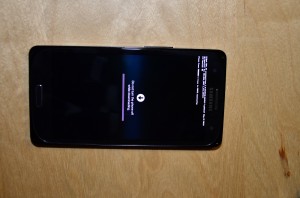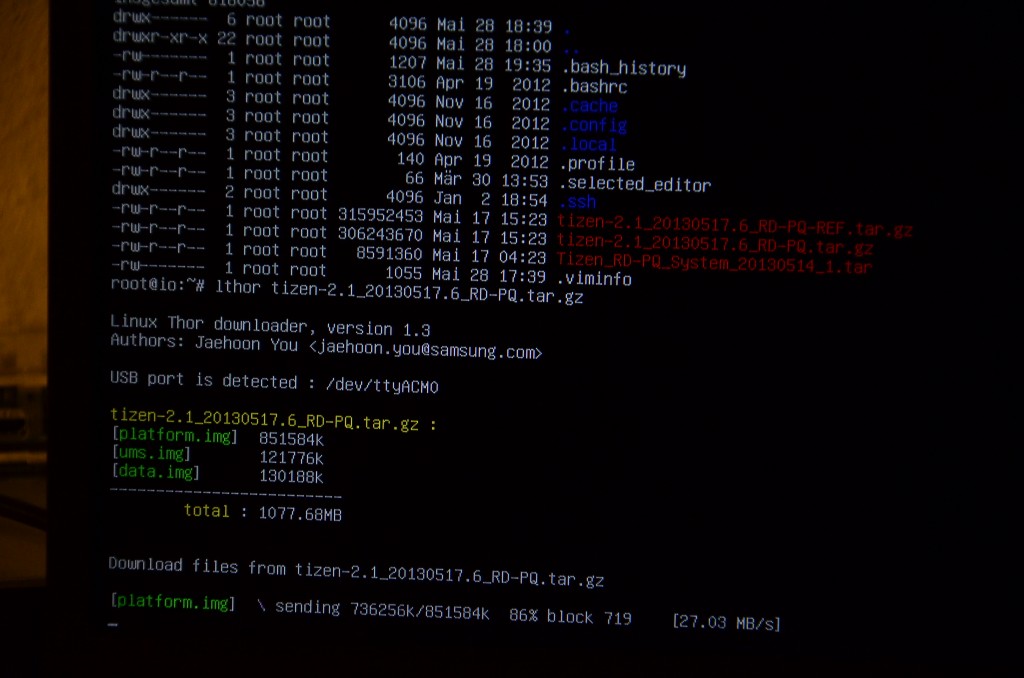Who, for example, in the context of the Samsung Port-a-thons Samsung RD PQ Tizen got the reference device will detect under certain circumstances, so that out-of-the-box can not use Wi-Fi and always a warning appears when you start the machine, there is no hardware acceleration for 3D graphics is available.
Apparently, Samsung has the equipment again flashed briefly before shipment with an actual Tizen 2.1 firmware and this, for whatever reason, used a version without Wi-Fi. So who is required WLAN is not around it, again aufzuspielen a newer version. This goes on for quite simple, but unfortunately you need to still a Linux box, Windows is still no flash tool available.
First of all I must however mention that we will not accept any liability for any damages arising during the flash process.
At this time we also have little information about how ‘dangerous‘ can be flashing and whether his device can possibly render it unusable so even. Therefore is generally advised extreme caution! The fact that not even just disconnect the USB cable or should remove the battery from the device during a flash process, is self!
With the Instructions from the Wiki of tizen.org the whole process is done quickly. Overall, only 2 files must be transferred to the device. To this end, the program lthor required, which you can install directly from the package source of Tizen organization. The exact procedure for here described. For Ubuntu 12:10 the following commands are run:
sudo nano /etc./apt/sources.list |
Now it depends on the following line at the end of the file:
deb http://,,en,Mo 15. Mai 2017, 16:50,,jadownload.tizen.org/tools/latest-release/Ubuntu_12.10 / |
Important: Pay attention to the space before the last slash! If you used a different version of Ubuntu, or even an entirely different Linux distribution, you must at this point, of course, seek out the appropriate repositories.
Now you can lthor install:
sudo apt-get update sudo apt-get install lthor |
The subsequent Flashing the firmware is done with the following commands:
lthor Tizen_RD-PQ_System_20130514_1.tar
lthor tizen-2.1_20130517.6_RD-PQ.tar.gz |
Before that the device must be put into the download mode. To this end, it turns off and then press the volume down and the power button simultaneously. That has not worked for me at the first attempt and I ended up in a special mode of the boot loader. The correct download mode is clearly noticeable:
If you've done everything correctly, you should after the start of lthor Command to see something like this on your screen:
After flashing the device restart itself and you have to set it up again. If the flash does not start or should terminate with errors, try the known tricks of bada:
- Anderer USB Port
- Other USB cable, preferably the adapter!
- Restart computer and device
- Use another computer
- The Troubleshooting Anleitung auf Tizen.org
Now, the wireless should work again, now it goes to the 3D graphics acceleration. There is also a Instructions on Tizen.org. What is needed this time only the Tizen SDK, whether Linux or Windows, and the Driver file. This you have to with a suitable program, for example, 7-Zip, Unpack and you put so rightly, that her 3 rpm Files can be transferred to the device in the next step.
Included in the SDK is a tool called sdb. This you have to with the following commands at RD PQ is connected and the started run:
sdb -d root on sdb -d push libtbm-exynos4412-1.0.2-1.armv7l.rpm /home/ sdb -d push libump-0.1.6-01.armv7l.rpm /home/ sdb -d push opengl-es-mali400mp-0.1.6-01.armv7l.rpm /home/ sdb -d shell |
The last command puts you in a command console directly on the RD PQ. There must you then run the following commands:
cd /home/ rpm -And --nodeps opengl-es-virtual-drv -IVH --force *.rpm sync reboot |
The unit starts now and again and should now run much more smoothly. Also, now should all warnings about the lack of graphics acceleration be gone and the web browser should also run again. One can again devote the actual purpose of the device, the development and testing of Tizen apps.
Updates:
29.5.2013:
- Complement with respect to repositories.
- used nano instead of vi
- Typo in the first corrected lthor command











